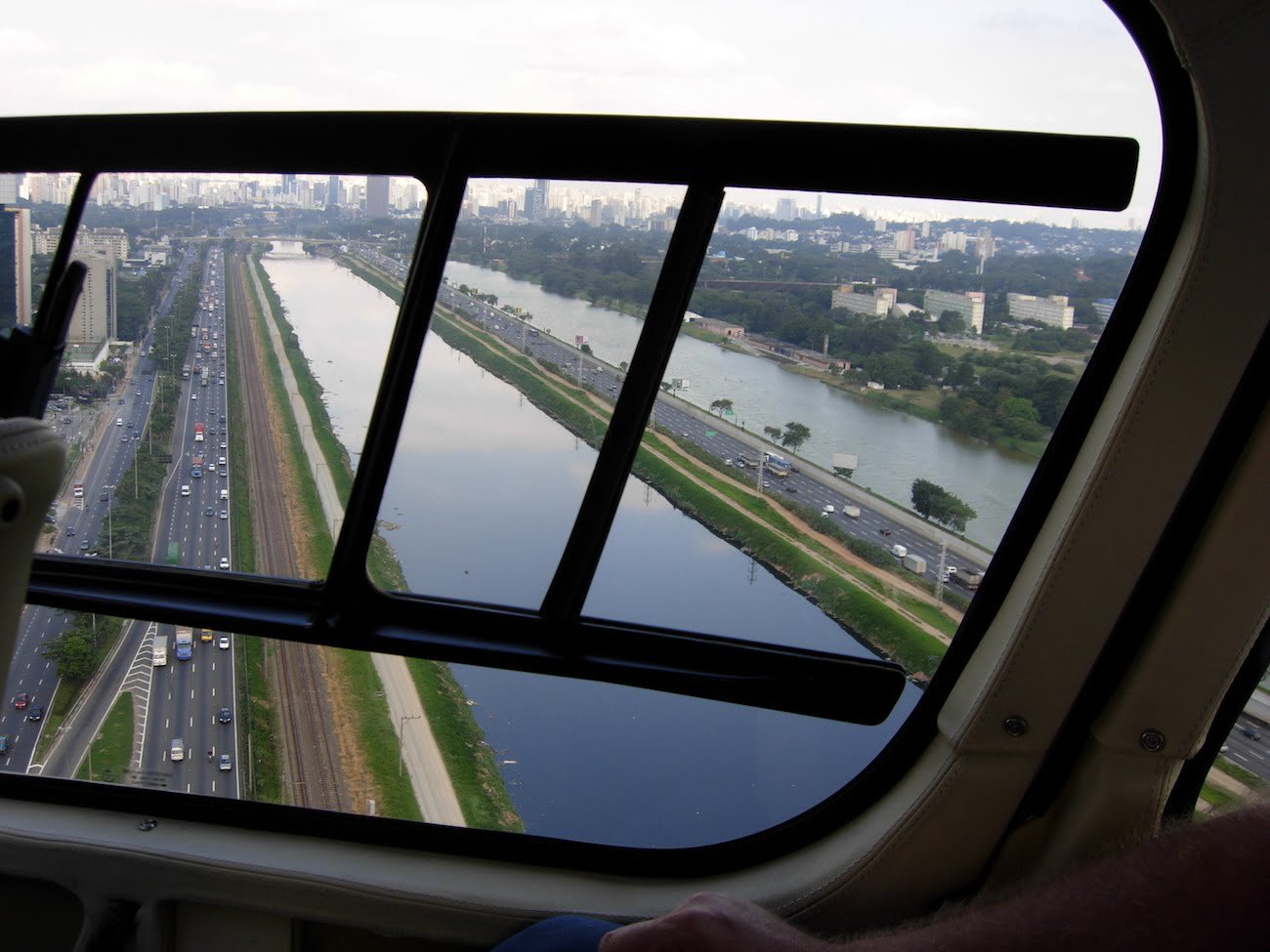A functional region is based on human activities; an ecological region is based on nature
A city is a functional region where human processes can dominate ecological ones. The ecological region (see explanation below), in which the city was established, still exists. But its ecosystems have been changed by human processes. Generally, human processes are strongest in the urban core and natural processes are strongest in the surrounding rural area.

A straightened river in Sao Paulo, Brazil. Photo: J. Birtch
A functional region is defined by human activities within it. It has many flows, but the primary ones are: goods, people, investment and information. Flows move between locations in the built environment (buildings, roads, canals etc.) and in natural areas (farms, forests, bodies of water etc.).
An ecological region is defined by natural phenomena (e.g. landforms, species of plants and animals) that exist in a place over time. It may contain a number of ecosystems (see The Biosphere and Us).
Ecological regions have flows too, but they relate to natural processes (like the food web – i.e. what eats what). Human activities can change ecological processes from their natural state.
A Biosphere Eco-City works to create harmony between people and nature. For this to happen, people need to understand the impact of human activities on ecological processes. This is something that can be considered in discussions on BEC Themes of Sustainability, because they relate to both people and nature. Also widely sharing the results of BEC activities can help more people understand those impacts.
Furthermore, the BEC Processes of Science and Education (as explained the BEC Model) can build a knowledge base on how to better align human and ecological processes. This knowledge would contribute to sustainability around the world.

